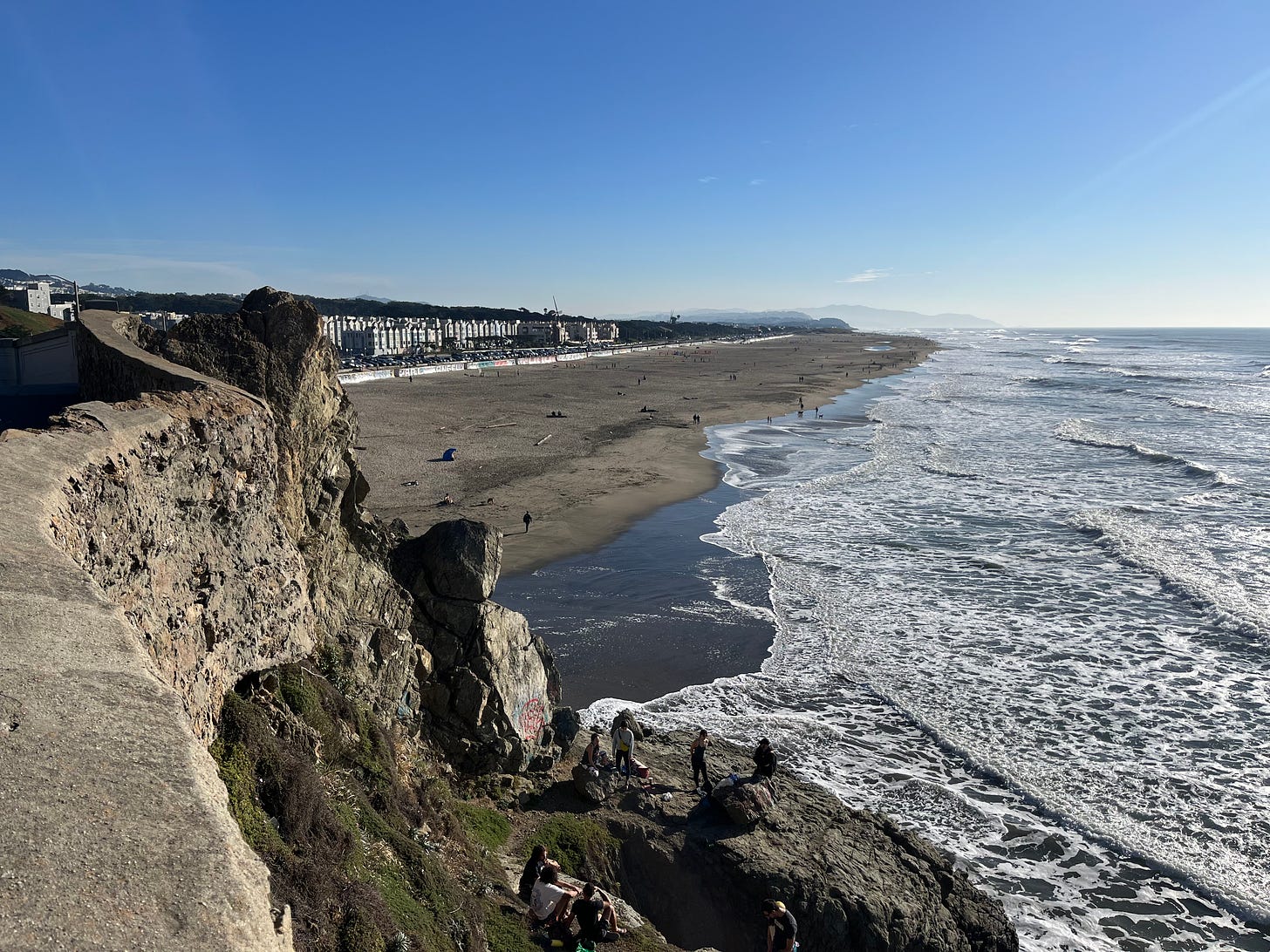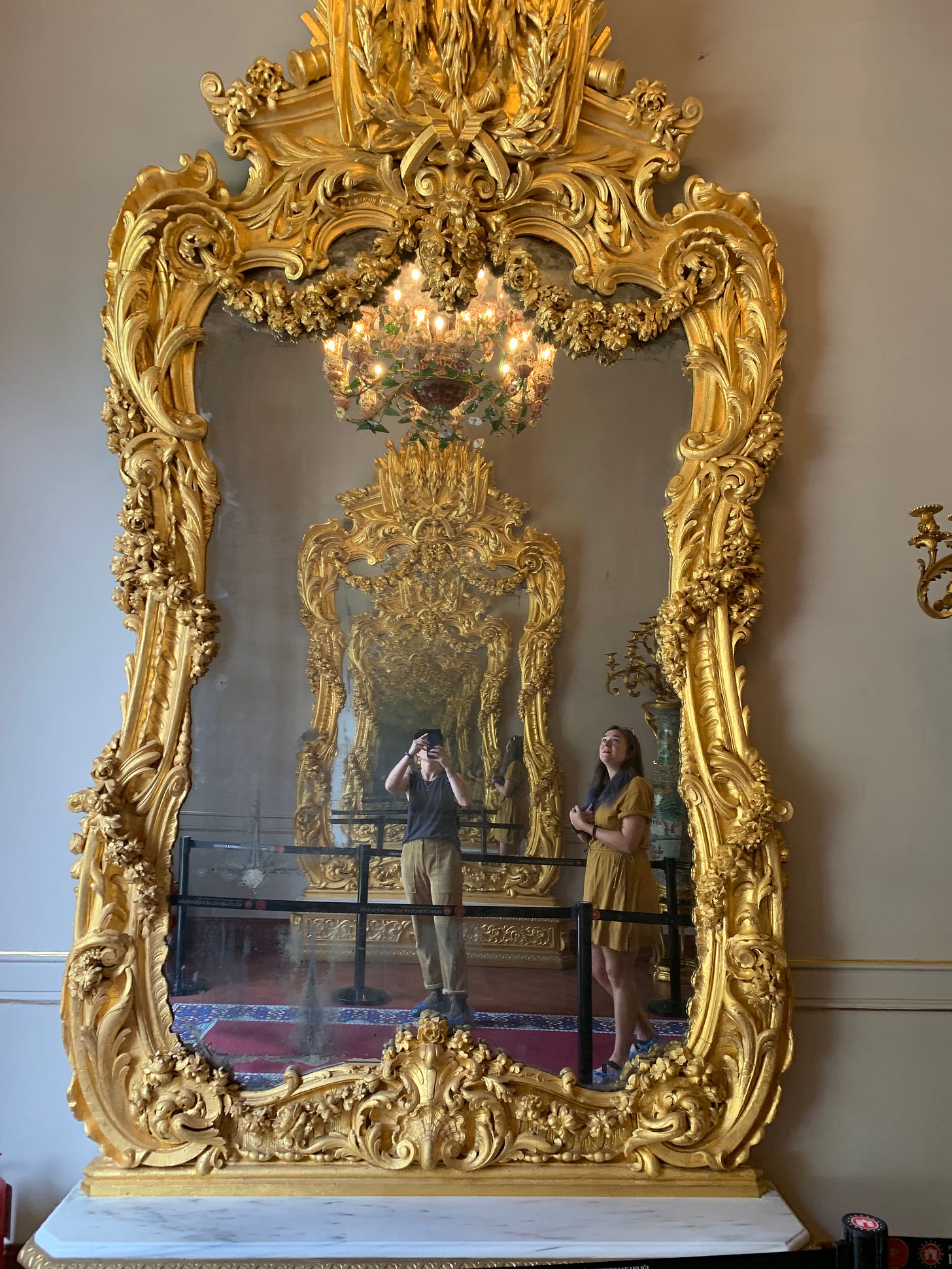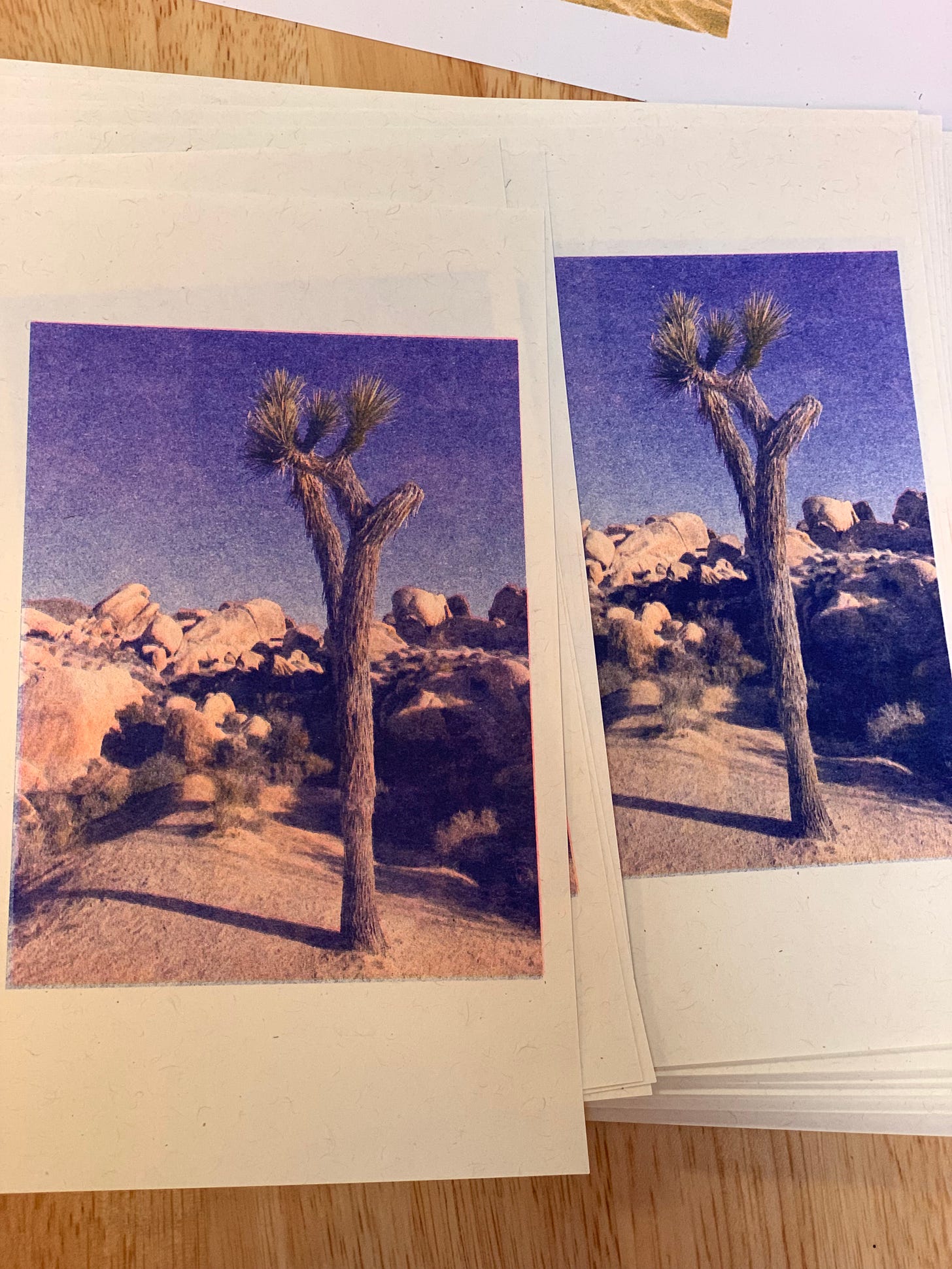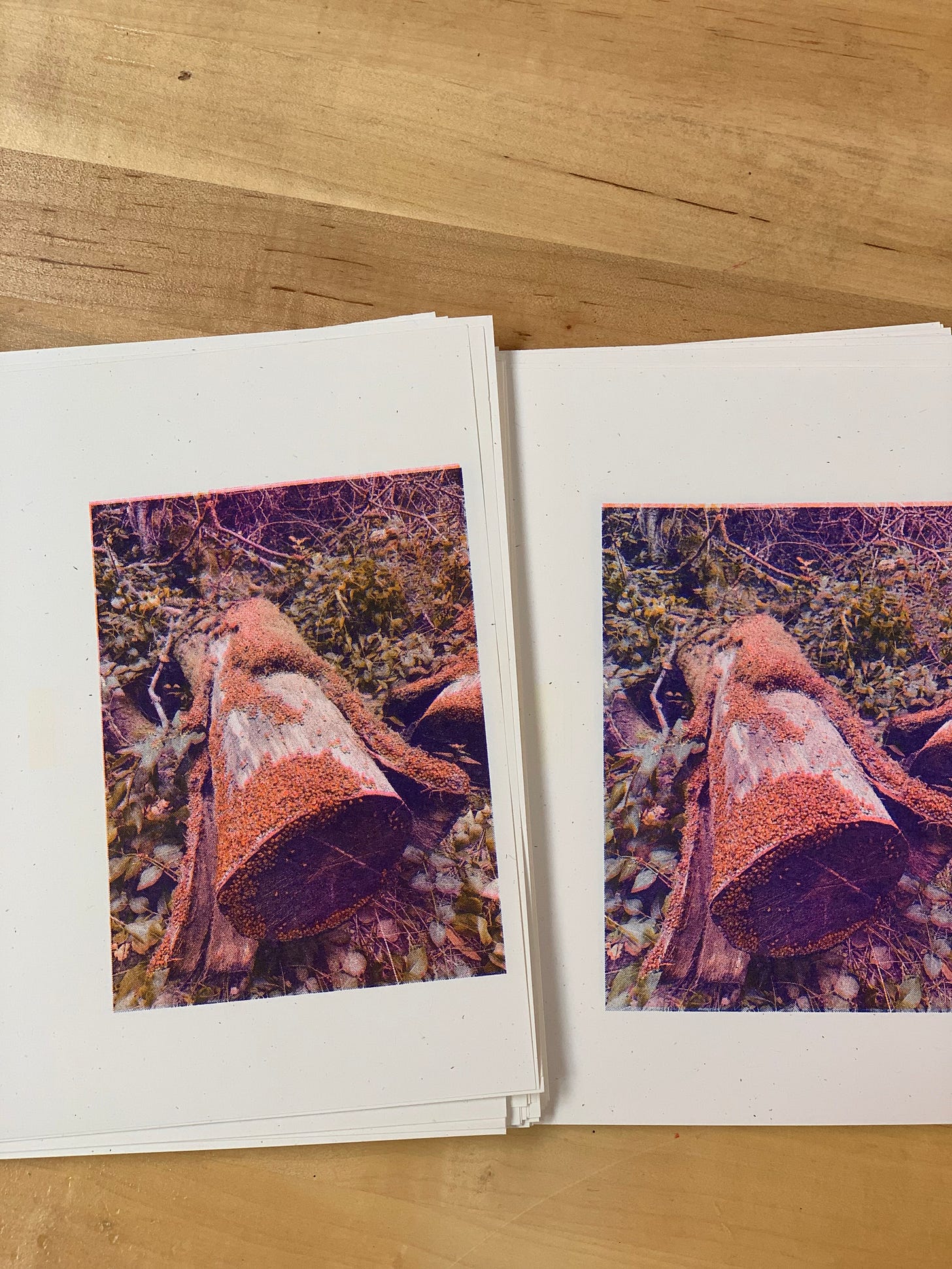A few months back, I spent a Saturday traipsing around San Francisco with a new friend. We took a ferry ride from Oakland to San Francisco, drank coffee at Dolores Park while watching dogs tumble about, rode e-bikes to the beach where we ate breakfast sandwiches and hiked along the shoreline up to the northern bluffs. It was a day to remember: clear and brilliant and bright.
By late afternoon, it was time to head back home to Berkeley. We were in the outer Richmond, a sleepy neighborhood filled with stately mansions, the type of wealth that doesn’t bother to disguise itself. My friend checked her phone. “We can catch the bus in nine minutes,” she said. This friend is a self-proclaimed “bus girlie,” the type of person who can board a bus not knowing where it might take her or where she might get off.
We sat in the very back row, next to a teenager with perfect eyeliner reading a fantasy novel. Within minutes, my friend fell asleep against the window. I pulled a book from my bag. As we wound our way through the streets of San Francisco, people boarded and exited, and I tried to narrow my focus onto the book in my hands, but it was impossible—there was too much life crowded into the bus to ignore. There was the elderly Chinese woman with her plastic bags of fruit, the young boys tapping on their phones like switchboard operators, the homeless man sitting with his backpack at his dirty sneakers, avoiding eye contact, the teenager fiddling with her air pods, throwing wary glances whenever a man passed by. I could feel myself staring at these people, willing myself to look away and failing to do so.
Moments like these remind me of the porosity of the self, the precarity of encountering other lives and slipping from your own, if only momentarily. On the one hand, the feeling is a delight. Who wouldn’t seize a chance to depart from the weight of your daily life—unanswered texts and voicemails, grocery runs, getting your oil changed—to enter another into the psychic landscape of another person’s story, staying just long enough for our illusions to remain untouched? But any daydreamer knows that it’s often hard to come back to yourself, even if you want to, and especially if you don’t. The sensation is like looking at yourself in a funhouse mirror—it’s hard to tell which version is truest.
“You do not need a shrink if you just take the 5th Avenue bus downtown, and sit and look at all the humanity,” so says the artist Maira Kalman in a recent interview with essayist Jordan Kisner. “What a cacophony of personalities, miserable people and happy people.” Years ago, during one of the depressive episodes that characterized my mid-twenties, I started crying on the bus to my dentist’s appointment not because anything acute had happened but because while staring at the fellow passengers I was overcome with the reality of just how hard it is to be alive sometimes, to make it through the day saddled with your desires and fears, to share a bus ride on a Wednesday morning with strangers who can see you should they choose to look up. The knowledge that every day and every moment could be like this—all our lives laid open like that—was terrible and enthralling at the same time, and while I felt incredibly connected on a spiritual level to my fellow passengers, I also felt alone. I was the only one crying, and even if someone had asked what was wrong, there was no way I could articulate how observing our holy, wretched interconnectedness was both a burden and a gift.
The memory embarrasses me now. Over the years, I’ve come to understand that there are boundaries to our projected fantasies, that even if you peer into someone’s life, the shape of the story you think you know is always shifting. In her essay “Street Haunting,” Virginia Woolf describes the self as something which “has battered like a moth at the flames of so many inaccessible lanterns.” Appealing as it may be to dwell in this light, we all know what happens to the moth drawn to the flame.
But how to explain all this to my new friend, the bus girlie? My new friend who was, incidentally, my new girlfriend, who had yet to witness me circle the hot core of my curiosity and despair like a skipper navigating a maelstrom, passing in tighter and tighter circles until the center all but collapsed. We were not at that level of intimacy, which is just a different of saying there were certain truths I would not, could not, reveal. Not yet anyway.
So I closed my book and leaned my head on her shoulder. She squeezed my knee lightly, and the city passed outside in a silver blur, the streets slick with winter shadows and people shuffling and skipping along the sidewalks, those hundreds of lives I would never know.
In other news:
Thanks to everyone who bought a “Dogs Dogs Dogs” calendar all those months ago! I ended up donating $4,500 to Middle Eastern Children’s Alliance, which has been procuring food and hygiene parcels and distributing them to displaced families throughout Gaza as this brutal war rages on. If you can make a donation to this organization, please consider doing so!
Book-wise, I just finished a weeks-long bender consisting of Hua Hsu’s Stay True, Leslie Jamison’s Splinters: Another Kind of Love Story, and Martyr! by Kaveh Akbar. Oh, and I got totally blindsided by Catherine Lacey’s Biography of X. (I need a book club/support group to unpack that book. I’m only kind of joking.) I’m currently reading Lydia Conklin’s debut collection, Rainbow Rainbow, and I highly recommend it. I’ve really appreciated the way Conklin’s characters all grapple with queer identity, especially when it comes to gender. Plus, Conklin is the author of the epic comic series, Lesbian Cattle Dogs!
Bean-wise, I made some mediocre turkey craw beans that I’ve been hiding in my burritos. Perhaps a bean soup is in my future!
I’m in the midst of working on a collaborative risograph project. I’ll share more about it soon, but in the meantime, check out these photorealistic print, each printed in yellow, fluorescent pink, and blue!






